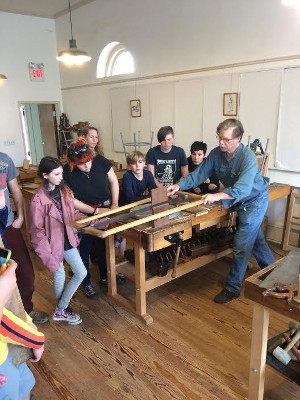Why Is Middle School Important?

This is the question two towns in Connecticut are asking themselves right now. Due to funding issues and low enrollment, the communities of Easton and Redding are deciding whether to close their middle schools. If they do, their fifth and sixth graders move to the elementary school while their seventh and eighth graders move to high school. Of course, no one really wants to close the middle schools, but as school budgets continue to tighten, communities across the country are going to face the same question: do we really need separate middle schools?
The answer is YES! But not necessarily for the reasons most people think.
Middle Schoolers have their own Unique Needs
 Even if we put aside the obvious questions of safety and peer pressure that go along with combining seventh and eighth graders with high school students, there are also strong pedagogical reasons to maintain our middle schools. Middle schoolers have very different needs than high school and elementary students. Their bodies begin changing, their emotions feel stronger, and their thoughts get more internal and complex. Everyday they confront issues that shape their morality and future place in society. They yearn for physical activity and intellectual inspiration. They want to use their hands to learn and create and they crave interaction with their peers. Neither a high school or elementary style classroom will meet these young adolescents’ needs.
Even if we put aside the obvious questions of safety and peer pressure that go along with combining seventh and eighth graders with high school students, there are also strong pedagogical reasons to maintain our middle schools. Middle schoolers have very different needs than high school and elementary students. Their bodies begin changing, their emotions feel stronger, and their thoughts get more internal and complex. Everyday they confront issues that shape their morality and future place in society. They yearn for physical activity and intellectual inspiration. They want to use their hands to learn and create and they crave interaction with their peers. Neither a high school or elementary style classroom will meet these young adolescents’ needs.
The Neglected Middle Child
The current, typical middle school classroom falls somewhere between an elementary and high school one. Colorful, inspirational posters still dot the walls while microscopes and test tubes sit on back tables. The Language Arts classroom still contains a reading corner while the Social Studies one now displays detailed topographical maps. Since middle schoolers act like a kid one moment and then surprisingly mature the next, these classrooms attempt to fulfill all the middle schooler’s needs by combining the excitement and play of grade school with the serious study of high school.
 This strategy doesn’t work. It fails to see middle schoolers as unique with valid and important needs. No wonder politicians and administrators feel like they can disband middle schools and distribute them to other schools. As Laurie Calvert put it on the U.S. Department of Education’s blog, Homeroom, middle schoolers are “the neglected middle children of education.”
This strategy doesn’t work. It fails to see middle schoolers as unique with valid and important needs. No wonder politicians and administrators feel like they can disband middle schools and distribute them to other schools. As Laurie Calvert put it on the U.S. Department of Education’s blog, Homeroom, middle schoolers are “the neglected middle children of education.”
An Environment Tailored to Them
Middle schoolers need learning environments that ignite their curiosity and empower them to be active participants in their community. Stand alone middle schools like Arthur Morgan School of Celo, NC use their entire campus as a teaching tool. Instead of classrooms, students learn science and history by working on the farm, in the school kitchen, or wood shop. They perform the real work of the school, which leads to questions of how and why that they then explore with guidance from teachers. Various art spaces provide creative outlets while a natural environment satisfies their physical urges and provides an imaginative backdrop to practicing their writing. It is an environment created with middle schooler’s developmental needs in mind and is successful at helping them through this important and delicate stage of life. As a result alumni from schools like Arthur Morgan stay excited about learning and participate more in their high schools and colleges.

If middle school classrooms continue to emulate high school and elementary classrooms, then perhaps there isn’t a very good argument against dispersing these students. Being confined in one building isn’t much different than being confined in another. However, if communities like Easton and Redding rally to support their middle school programs, then they have the opportunity to rethink education strategies for this important developmental age. They can create learning environments that cater to their sense of wonder and inspire life long learners.
-by Nicholas Maldonado
